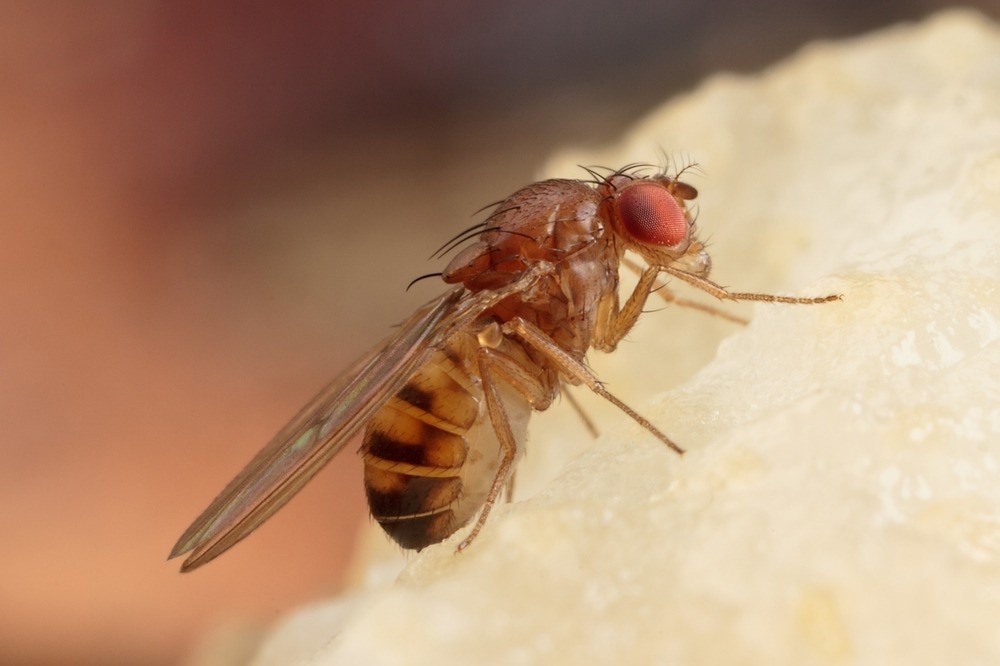Mar 6 2023
Researchers have built the first ever map showing every single neuron and how they’re wired together in the brain of the fruit fly larva.

Image Credit: Ant Cooper/Shutterstock.com
This huge step forwards in science will ultimately help us understand the basic principles by which signals travel through the brain at the neural level and lead to behaviour and learning.
The map of the 3016 neurons that make up the larva’s brain and the detailed circuitry of neural pathways within it is known as a ‘connectome’. It’s the largest complete brain connectome described yet.
Professor Marta Zlatic and Professor Albert Cardona of the Medical Research Council Laboratory of Molecular Biology based at the University of Cambridge, and colleagues from the University of Cambridge, and Johns Hopkins University, and others, led this ground-breaking research. The study is published in Science on 10 March 2023.
An organism's nervous system, including the brain, is made up of neurons which are connected to each other via synapses. Information in the form of chemicals passes from one neuron to another through these contact points.
“The way the brain circuit is structured influences the computations the brain can do. But, up until this point, we’ve not seen the structure of any brain except of the roundworm C. elegans, the tadpole of a low chordate, and the larva of a marine annelid, all of which have several hundred neurons. This means neuroscience has been mostly operating without circuit maps. Without knowing the structure of a brain, we’re guessing on the way computations are implemented. But now, we can start gaining a mechanistic understanding of how the brain works.”
Professor Zlatic
Zlatic explained that current technology isn’t yet advanced enough to map the connectome for higher animals such as large mammals. However, she said:
“All brains are similar – they are all networks of interconnected neurons – and all brains of all species have to perform many complex behaviours: they all need to process sensory information, learn, select actions, navigate their environments, choose food, recognise their conspecifics, escape from predators etc. In the same way that genes are conserved across the animal kingdom, I think that the basic circuit motifs that implement these fundamental behaviours will also be conserved.”
To build a picture of the fruit fly larva connectome, Zlatic, Cardona and colleagues scanned thousands of slices of the larva’s brain using a high-resolution electron microscope. They reconstructed the resulting images into a map of the fly’s brain and painstakingly annotated the connections between neurons. As well as mapping the 3016 neurons, they mapped an incredible 548,000 synapses.
The researchers also developed computational tools to identify likely pathways of information flow and different types of circuit motifs in the insect’s brain They found that some of the structural features are exactly like state-of-the-art deep learning architecture.
Zlatic said:
“The most challenging aspect of this work was understanding and interpreting what we saw. We were faced with a complex neural circuit with lots of structure. In collaboration with Professor Priebe and Professor Vogestein’s groups at Johns Hopkins University, we developed computational tools to extract and predict from the structure the relevant circuit motives. By comparing this biological system, we can potentially also inspire better artificial networks.”
“This is an exciting and significant body of work by colleagues at the MRC Laboratory of Molecular Biology and others. Not only have they mapped every single neuron in the insect’s brain, but they’ve also worked out how each neuron is connected. This is a big step forward in addressing key questions about how the brain works, particularly how signals move through the neurons and synapses leading to behaviour, and this detailed understanding may lead to therapeutic interventions in the future.”
Jo Latimer, Head of Neurosciences and Mental Health at the Medical Research Council
The next step will be to delve deeper to understand, for example, the architecture required for specific behavioural functions, such as learning and decision making, and look at activity in the whole connectome while the insect is doing things.
Journal reference:
- Michael Winding, Benjamin D. Pedigo, Christopher L. Barnes, Heather G. Patsolic, Youngser Park, Tom Kazimiers, Akira Fushiki, Ingrid V. Andrade, Avinash Khandelwal, Javier Valdes-Aleman, Feng Li, Nadine Randel, Elizabeth Barsotti, Ana Correia, Richard D. Fetter, Volker Hartenstein, Carey E. Priebe, Joshua T. Vogelstein, Albert Cardona, Marta Zlatic, The connectome of an insect brain, Science, [published 10 March 2023]